Today, it is beautifully aquarium with the inhabitants of the Water World will succeed with many plants. Among the huge range of separate attention, Kababuba deserves - aquarium culture presented in a large species manifold.
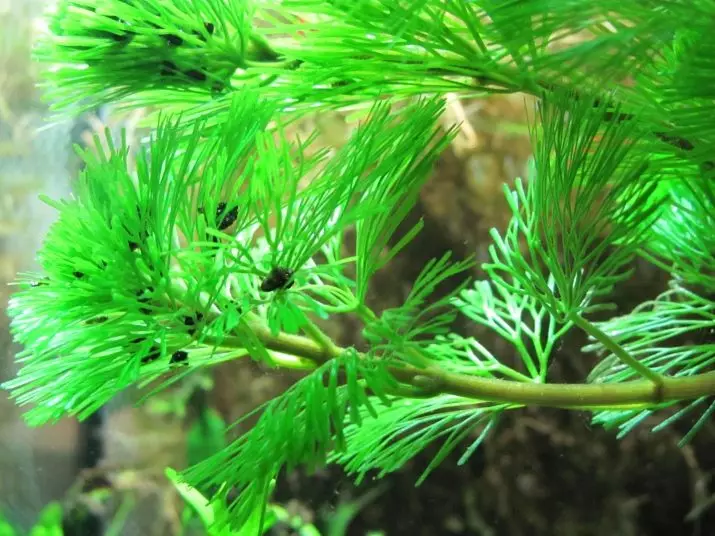
Description
Ferns, mosses, algae, as well as other aquarium plants are actively used for decoration of reservoirs with water inhabitants and without them. However, Kababuba is not less popular for such purposes - a plant with thick branches covered with subtle, thread-like leaves that determine its similarity with a cheese. Such a culture can have a different color from the familiar shades of green to bright red options.
The aquarium plant is attractive not only with its escapes and leaves, but also the ability to flowering, so that the underwater "Christmas tree" becomes even more beautiful, acquiring a festive look.
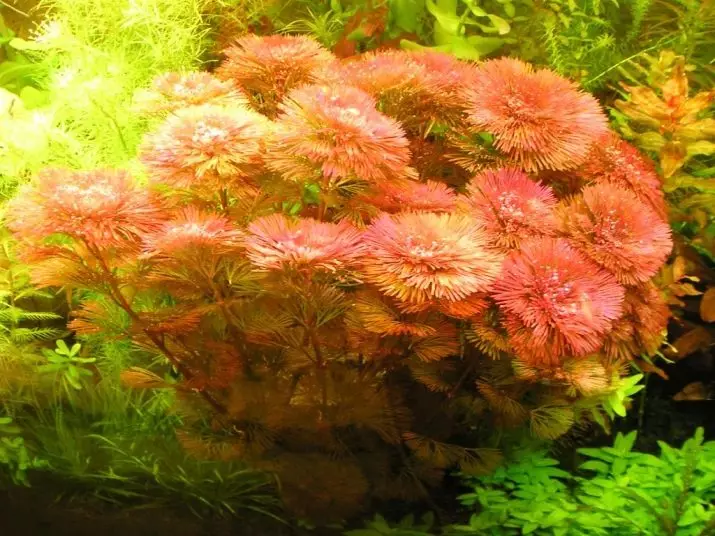
Kababuba refers to the same name of the Kabombian cultures. It is believed that the origins of the plants go to the countries of South America, Brazil and Guiana.
Culture, unlike Mukhov, has a smaller root system, sharpening stems, which are first stretching strictly up, but then fall under their weight to the bottom and begin to branch. The leaves are growing oppositely, they do not have half foliage, young foliage can have a pale pink or raspberry color, later it becomes green. They are usually assembled in a muti of 3-4 pieces.
As for the shape, the leaves can be solid or with a heart-shaped base, the surface is smooth and brilliant. Flowers are formed on the cups, grow apart, on a long leg. May be flawed both in water and under water. The flowering phase falls for the first months of spring. In content in the aquariums, the culture grows perfectly and develops without human participation.
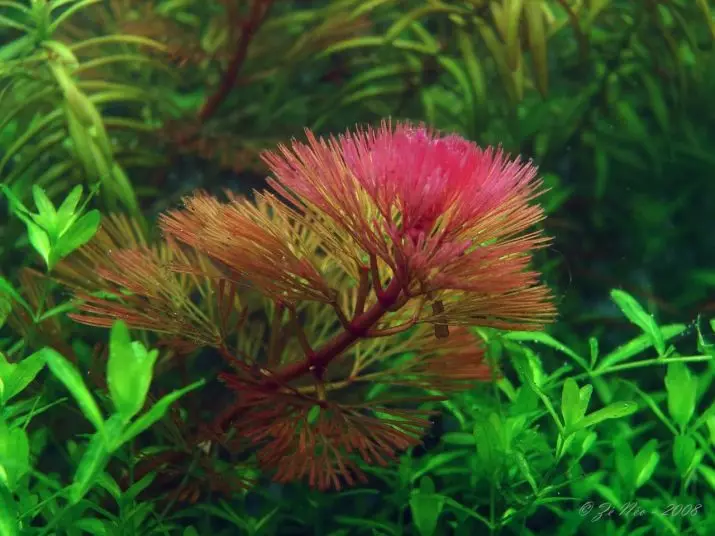
Kabomba is called a truly swamp grass, even when the culture reaches its escape surfaces, it will not leave it, as the stem must always be in the water environment.
And floating leaves can be formed on the surface, separately resembling pita.
In addition to its main decorative function, Kababuba in tanks with water inhabitants is able to perform several no less significant tasks.
- First of all, this concerns the possibilities of the plant to intensify vital metabolic processes in the aquatic environment. Culture in the phase of its growth and development absorbs nitrates and other harmful compounds, acting as a natural filter in the aquarium.
- Kabomb becomes a full shelter for many small fish or crustaceans.
- In addition, in the plant itself, the process is important for water fauna - spawning. In the light of which it performs a very important function for aquarist and aquatic inhabitants.
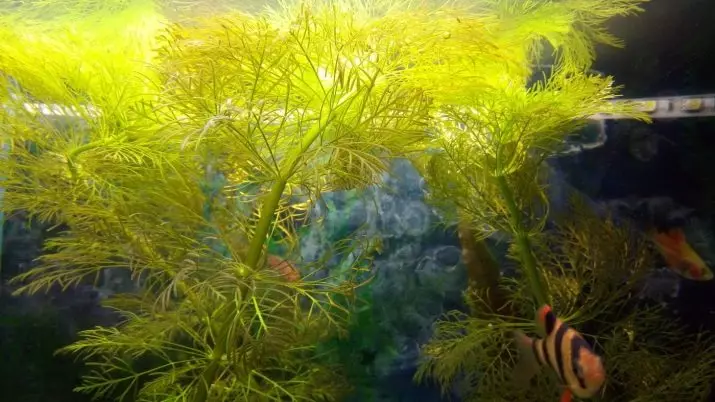
In general, with aquarium breeding, Kababba does not stand out by any incompatibility with other similar water cultures, but in the light of the fact that it creates quite quickly in the tanks, can at the same time coal and absorb the growing plants nearby.
It is this fact that warns from landing of herbs next door to particularly sensitive varieties of aquarium flora.
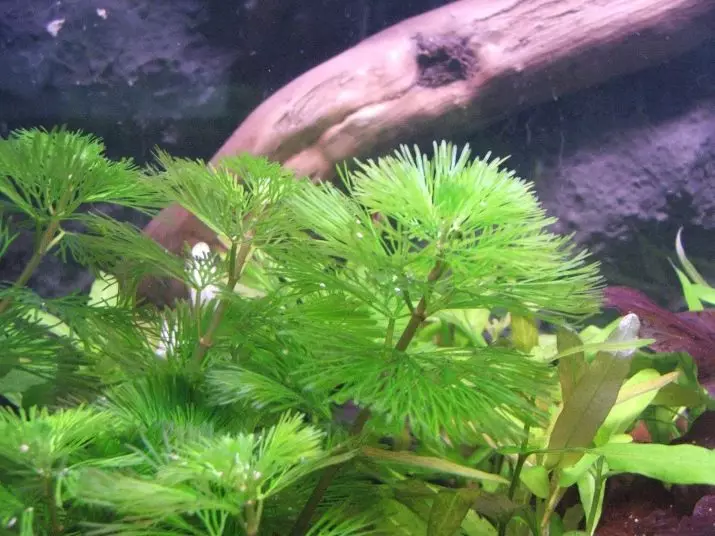
In addition to vegetation, there are recommendations regarding the joint content of water inhabitants and blooming culture. So, too active decorative fish can harm the leaves of culture, provoking their premature fiction by their movement. Despite its unpretentiousness and endurance, Kababuba is very sensitive to mechanical damage, so it is worth breeding in aquariums with calm and small inhabitants.
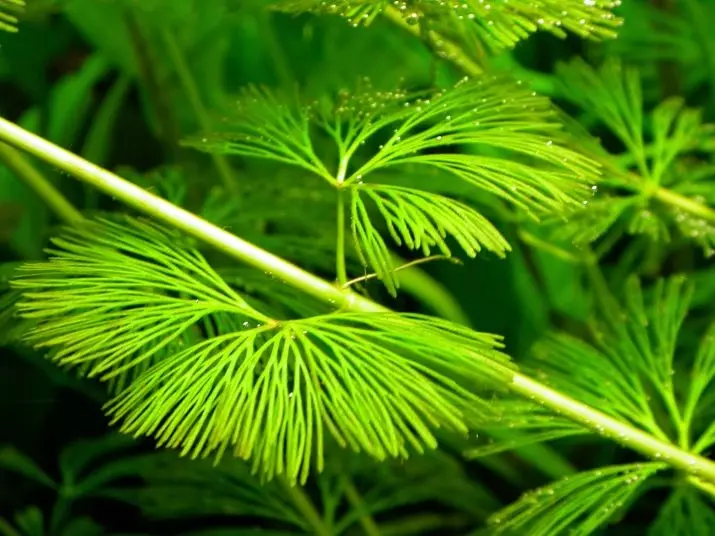
Varieties
Today there is a huge number of varieties of this aquarium culture. It is worth noting particularly popular types of CaboB.Carolinskaya
Culture with long standing stem. The leaves will be painted in green, the width of them usually does not exceed 5 centimeters. Flowers plant with yellow air flowers. This species is usually used to root in the background in the group composition.
For the Cabomb, the duration of the light day is important, which should be at least 8 hours. Optimal lighting indicators will be with a capacity of 50 lm / l.
From contact with straight sunshine, the plant should be protected. Kinderbage is contained in water, the temperature of which will be + 22.27 ° C with acidity at 6 pH. Modify the view will succeed with stalling.
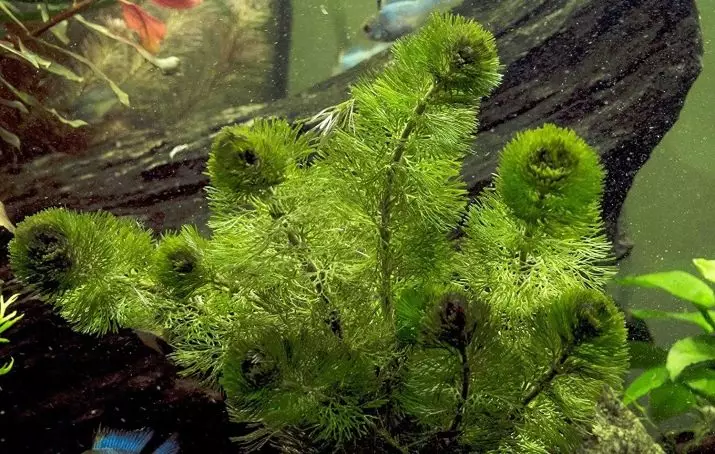
Water
Of the creeping rhizomes, the formation of a culture stems. A plant is distinguished among the remaining representatives of the family of a fan-shaped form of leaves. The color of vegetation can vary from light green to the scarlet.
This variant of aquarium culture is suitable for rooting in the middle part of the reservoir, and it is multiplied with stalling.
For the correct development of the Kababombe water will need a liquid The temperature is not lower than + 24 ° C at the level of illumination of the tank in the range of 50-70 lm / l, as well as stiffness at 6 pH.
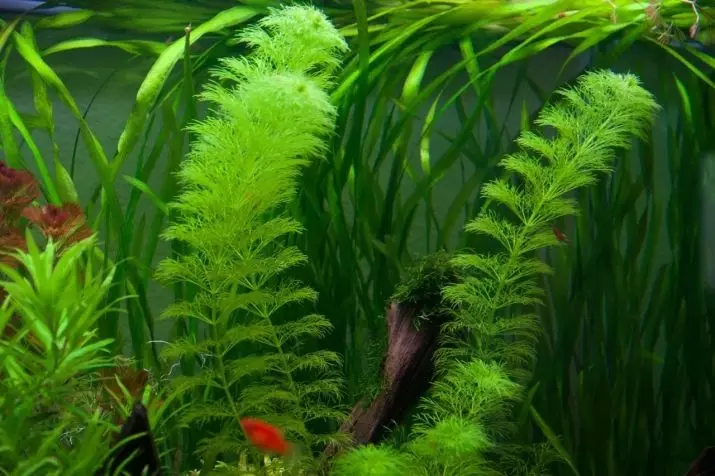
Wilshaw
Among the available varieties, this species is considered the most attractive. The leaf plate of culture is usually painted in red and yellow, while the petals of the bunny will be purple with yellow splashes at the base. Culture grows in aquariums up to 40 centimeters, suitable for accommodation in the reservoir in the background. It is contained at the level of lighting in the range from 0.7 to 1 W / l at a temperature of + 24 ° C. So that the plant develops correctly, it will be necessary to feed in the form of microfertres.
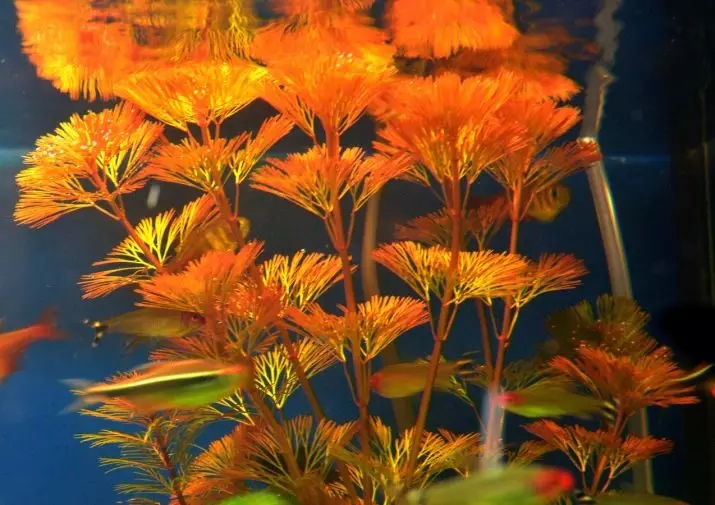
Spiral Oil
The foliage of the culture has a characteristic silver tump, similar to the needles in the described type described, since each sheet has a dissection.
In the height, aquarium culture reaches about 25-30 centimeters. It is usually rooted along the rear wall of aquariums.
To Kababuba pleased with her attractiveness, she will need to provide a 12-hour daylight, as well as water temperature at least + 24 ° C.
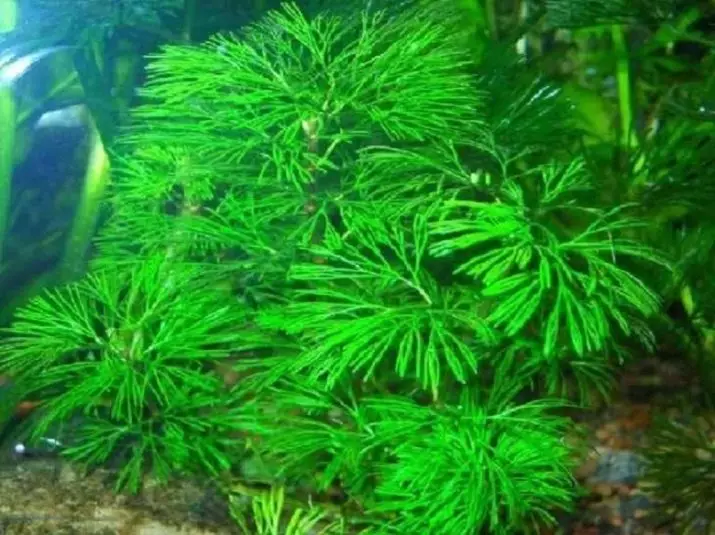
Beautiful
The stalks in the plant are not inclined to strong branching, the shoots have a reddish color. When the cassuba reaches at its height of the water surface, the floating foliage is formed on it, which is compared. Culture foliage develops with cushion, color can vary from reddish to green.
The form of the leaves is solid, as a rule, their size does not exceed 4 centimeters.
Very beautiful this look looks in group plantings, It is best to put it near the rear wall. For the content of culture, it is not necessary to create any unique conditions - the only requirement is its protection against direct sunlight.
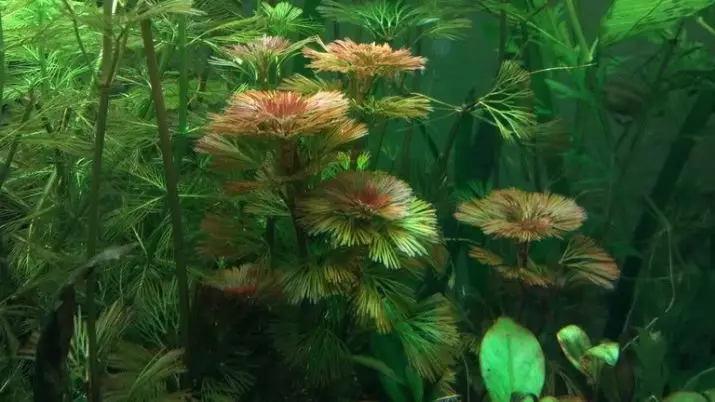
Conditions for growing
The plant continues its growth and development throughout the year, in general, to the conditions of maintenance underwater "Christmas tree" will be undemanding. To ensure the comfortable coexistence of such a plant with water inhabitants, It is worth maintaining the water temperature in the range from + 18 ° C to + 28 ° C.
As for acidity, the optimal indicator should be within 6-8 pH. But if such an environment for the Cabomb is to ensure due to certain conditions, it will be possible to teach it to a more rigid fluid, but then it is worth being prepared for the fact that culture will grow much slower, in addition, the needles will also be smaller in length .
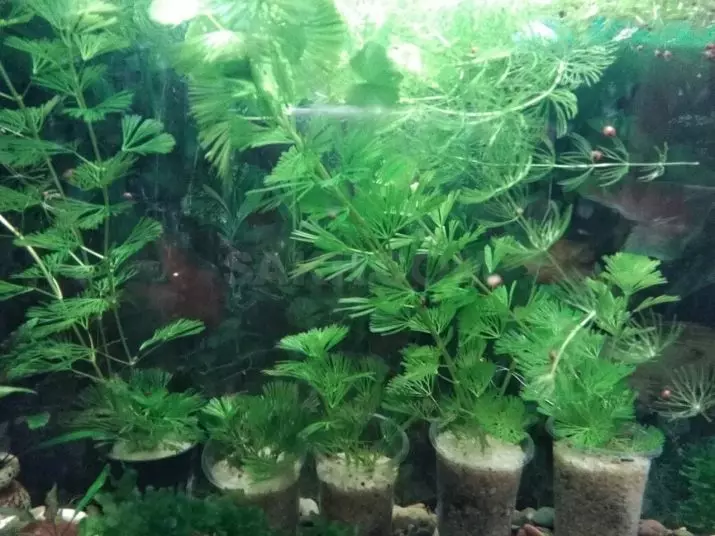
Like other aquatic inhabitants, a variety of illness can occur in the plant. If you neglect the purity of water in the aquarium, various trash particles will be seen in the CaboBabe inspection, therefore the attractiveness of decorative culture will suffer significantly.
The substitution of water in the container should be carried out regularly, as well as the removal is subject to old leaves of culture. In all its glory, Kabomba may appear in glass tanks only subject to ensuring good lighting. It is not enough to determine that she lacks light, it is possible for an extended structure, as well as faded coloring stalks and leaves, they can even become yellow. In order for the culture well and correctly growing, the lighting should be combined, that is, a natural and artificial light should fall into the aquarium, but without direct ultraviolet rays, especially at midday.
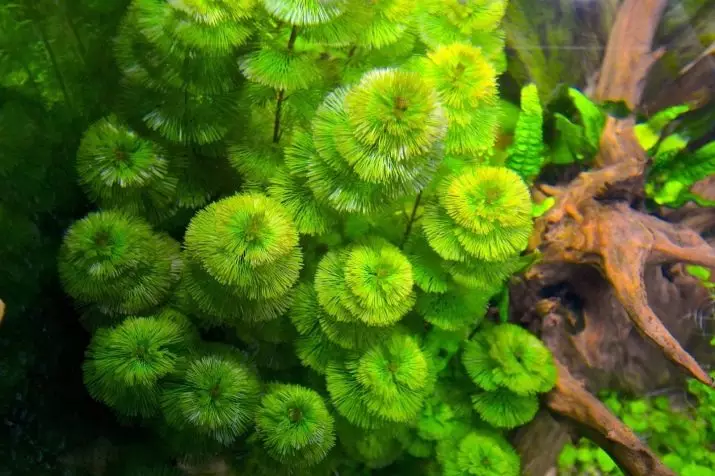
Usually, the aquarists use fluorescent lamps in brews with breakers, the power of which will vary from 0.4-0.5 W during their continuous operation of at least 8-12 hours per day.
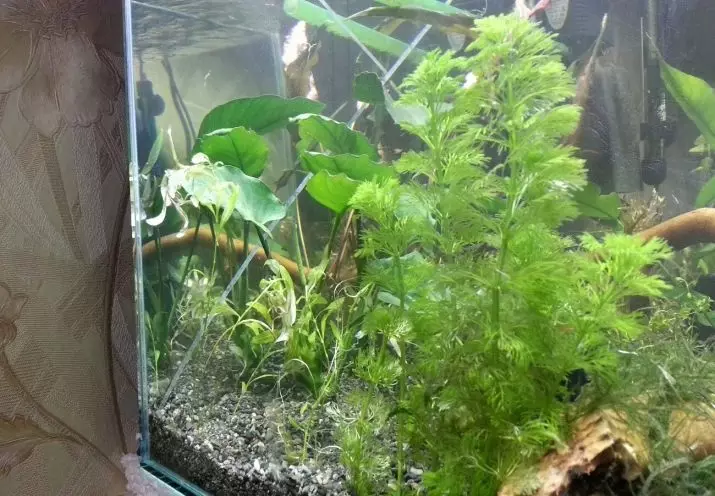
Since decorative culture has a developed root system, it will need to provide a nutritional soil in the aquarium. So that the gentle roots are well strengthened, it is best to use as a substrate for the bottom of the pebbles or sand shallow fraction. If the raw material is large, the creeping roots will develop at times worse.
In an additional feeding, the culture will not be needed, Since it is capable of receiving missing substances from fresh water and feed, which will eat inhabitants of home aquariums.
In winter, the Kohnbi can be toiling the old shoots that, after separation, usually float to the surface.
However, it is not necessary to remove them from the reservoir of necessity, one must remain on the surface before the arrival of spring. During this period, leafy sinus and young roots will begin to develop their development, if separating such a part of escape, and then root it at the bottom, then you can easily get a new decorative culture.
How to plant?
In general, planting plants will not cause any difficulties even at an inexperienced aquarist. To decorate your reservoir Kababla, you just need to place a bush in the substrate at the bottom, additionally, the dumping ground.

To stimulate a new culture to growth, it is worth cutting up the top of the algae, so the new plant shoots will shoot a much busy.
Excessive recess in the soil should be avoided, since such landing options can lead to the root system. To fix the CaboBabe in a new place, you can press it with a decorative stone or corporate from the aquarium for a while.
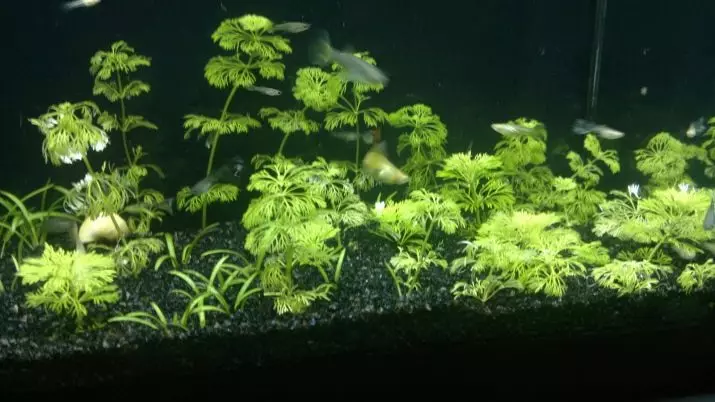
Reproduction
Under the conditions of closed tanks, the decorative plant is made to multiply with the stalling of the main stem or the root. If only the stem is cut, it should be at least small roots. If you roam such a bush at the selected place, it will quickly begin to increase in size.
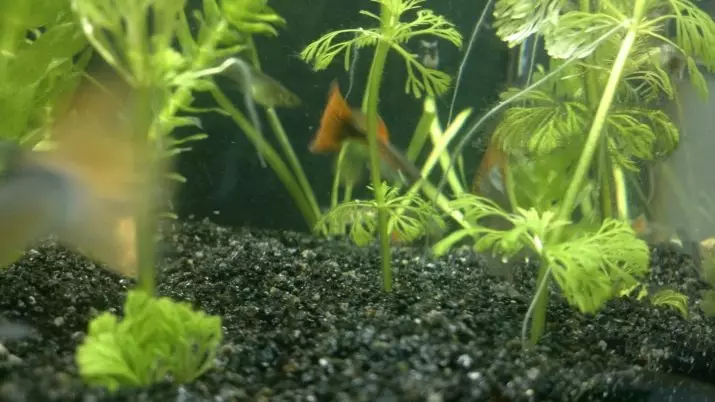
In addition, the Kabomba can be multiplied using several flocks of leaves for this. However, this option will not allow to get a new decorative culture very quickly. Beginner aquarists who wish to independently get a new decorative plant, it is recommended to use a lower part with small roots or top cuttings as a cutlets. As practice shows, the intermediate parts are rooted very slowly and not always successfully.
For varieties of Cabooms, see below.
